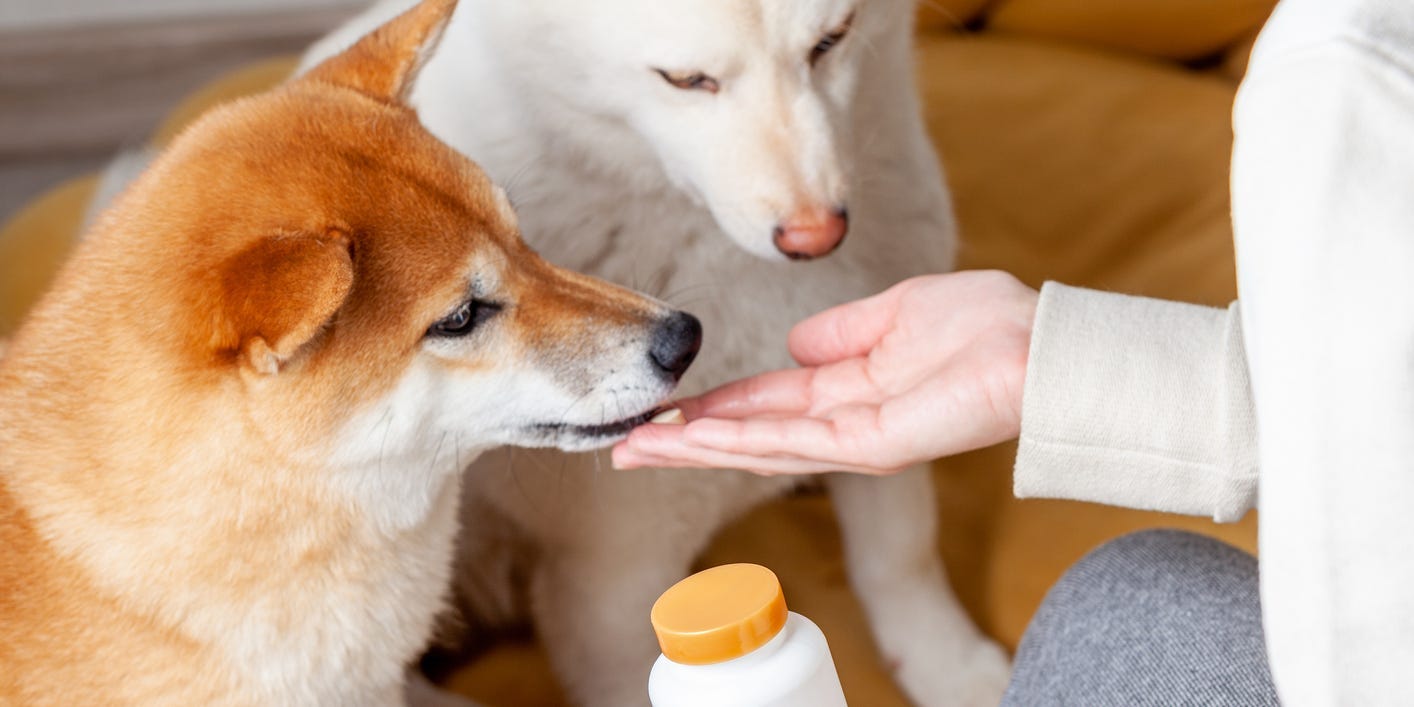
- Benadryl is safe to give your dog for allergies, anxiety, motion sickness, and vaccine side effects.
- Though a typical Benadryl pill is 25 mg, you should only give your dog 0.9-1.8 mg per pound of weight.
- Make sure that the Benadryl you’re giving your dog only contains diphenhydramine.
- Visit Insider’s Health Reference library for more advice.
Benadryl is safe for dogs, but don’t give any to your dog without consulting a vet first as the wrong dose could be toxic.
Your vet may recommend Benadryl to help treat your dog for conditions like hives or anxiety and can guide you on delivering the correct dosage and medication.
Here’s what you need to know about how much Benadryl your dog should take and when you need to see the vet.
Uses of Benadryl for dogs
Benadryl, or diphenhydramine, is a common over-the-counter medication that helps relieve itching, swelling, and other allergy symptoms.
Because of this, you can give it to your dog for conditions like:
- Allergies: Benadryl works to treat several different types of canine allergies, including food allergies, seasonal allergies, skin allergies, and allergic reactions to triggers like a bee sting. It can help calm symptoms like:
- Swelling
- Hives
- Sneezing
- Runny nose and eyes
- Itchy skin
- Anxiety: "A common side effect of Benadryl is drowsiness, so it may also be used to temporarily calm anxious dogs," says Tierra Price, DVM, MPH, a veterinarian and founder of the BlackDVM Network.
- Motion sickness: Benadryl's sedating effect may also help fight off motion sickness during car or airplane rides with your dog.
- Vaccine reactions: "Puppies receive vaccinations early in life and can have a reaction to these vaccines," Price says. To calm reactions like swelling or fatigue, veterinarians often recommend giving your puppy Benadryl two to four hours before the vaccine appointment, says Price.
Dosing instructions for Benadryl
The Merck Veterinary Manual recommends giving your dog 0.9-1.8 mg of Benadryl per pound of weight (2-4 mg/kg of weight).
If you want to try over-the-counter Benadryl, the best form is usually a tablet, which is typically 25 mg per tab, says Justine Lee, DVM, a board-certified veterinarian who specializes in toxicology and emergency care.
This means that, generally speaking, a 25-pound dog would get one pill and a 50-pound dog would get two.
If you have a very small dog, you may need to use a lower-dose liquid children's formula to get the proper dose for their weight.
Price says you can also use Vetadryl, which is a form of Diphenhydramine designed specifically for dogs. Though it is the same medicine and you could technically use any one, Vetadryl has some benefits like:
- A 10 mg option, which may make dosing easier
- Flavoring for dogs, which may make it more appealing to your pup
Precautions when using Benadryl
When using Benadryl, keep these precautions in mind:
- "Benadryl is available over the counter for pet parents to purchase but should only be done under the direction of a veterinarian," Price says. Your vet can determine the best starting dose and check if Benadryl has a negative interaction with any other medications your dog takes.
- If you're purchasing Benadryl over the counter, "you want to make sure it's Benadryl that is only diphenhydramine, no other ingredients added in," Lee says. Watch out for ingredients like acetaminophen or decongestants that may not be safe for dogs.
- Always check the box to make sure the Benadryl isn't expired, as expired medication can be unsafe for your dog, Price says.
Side effects of Benadryl in dogs
Some of the most common side effects of Benadryl include:
- Drooling
- Drowsiness
- Increased heart rate
- Dry mouth
- Rapid breathing
- Lack of urination
"Although Benadryl is a safe drug, overdosing is possible," Price says. Some possible signs of overdose are:
- Agitation
- Seizures
- Dilated pupils
- Rapid heartbeat
- Constipation
"If you do suspect an overdose, you should call your veterinarian immediately and take in the packaging for medications that were administered," Price says.
If you gave your dog Benadryl for an allergic reaction, watch to make sure your dog's symptoms are getting better. "If your dog is showing signs of difficulty breathing or the swelling is getting worse, you want to get to a vet or an emergency vet immediately," Lee says.
Insider's takeaway
Benadryl can be a helpful remedy if your dog has anxiety, allergies, motion sickness and other conditions.
You can get Benadryl over the counter, but it's best to talk to your vet before starting any new medication.
If your dog shows any alarming symptoms like seizures or dilated pupils, go to an emergency vet as quickly as possible
